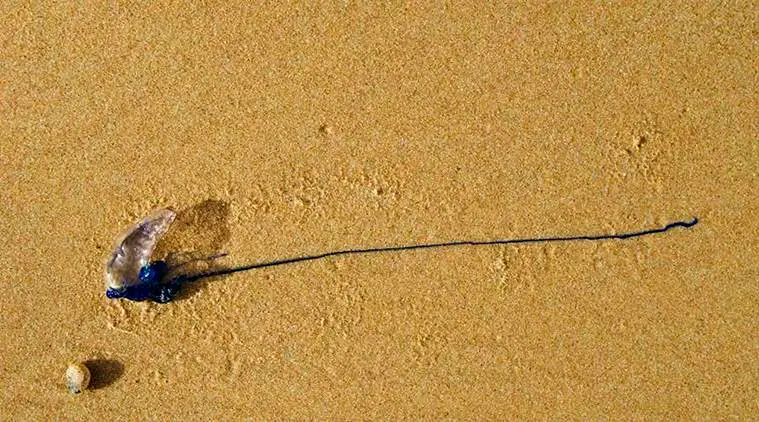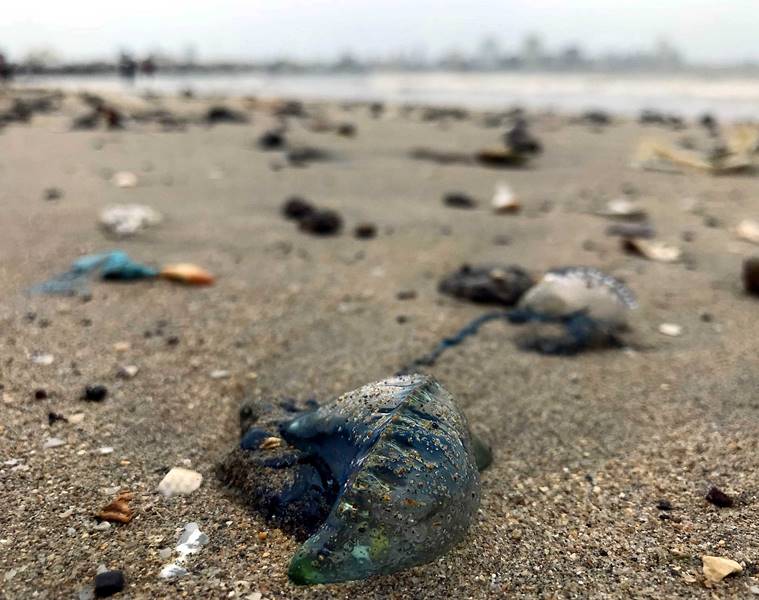 Bluebottle jellyfish is attacking people at Juhu beach in Mumbai. (Source: SedonaGuy/Wikimedia Commons)
Bluebottle jellyfish is attacking people at Juhu beach in Mumbai. (Source: SedonaGuy/Wikimedia Commons)
The presence of blue bottle jellyfish, which is also known as the Portuguese man-of-war, created panic at Girgaum Chowpatty, Aksa and Juhu beaches in Mumbai over the past few days. The venomous marine creature has long tentacles, and if it comes in contact with humans can deliver a sting that can be excruciatingly painful.
The “floating terror” was also spotted at the popular Baga beach in North Goa. According to The Hindu, the Drishti Marine, Goa Tourism’s beach safety agency, issued an advisory for tourists and local residents to refrain from venturing into the sea at Baga beach as lifeguards spotted a swarm of the Portuguese man-of-war washed ashore.
Identifying the creature
Usually found on shores during monsoons due to strong winds and currents, the blue bottles are siphonophores, a colony of marine organisms. What makes the species unique is that siphonophores are actually made up of several colony members called “persons”. These members typically include feeding persons, reproductive persons, and stinging persons, among others.
The blue bottle has a gas-filled bladder while other siphonophores have swimming bells similar to jellyfish.
 Blue bottle Jellyfish that washed ashore in Girgaum Chowpatty in Mumbai on monday.
Blue bottle Jellyfish that washed ashore in Girgaum Chowpatty in Mumbai on monday.(Express photo by Nirmal Harindran)
How to treat the pain?
The sting is not just painful but can also cause a red rash. The venom injected in the sting can also travel through the body to the lymph nodes and cause acute pain.
UK’s National Health Service recommends removing any sting stuck in the skin using a tweezer or the edge of a bank card and soaking the wound in water that is as warm as bearable for up to 30 minutes. Painkillers like paracetamol and ibuprofen can help. New research suggests washing it with dilute vinegar.
Do not urinate on the sting (just because you saw it on Friends!), apply a cold pack, wash it in sea water or close the wound.
Generally, the sting doesn’t need require medical treatment, but if the pain persists, it is advisable to seek help.
For any one experiencing symptoms like shortness of breath, it is best to get proper medical treatment as the venom can even cause death in extreme cases.